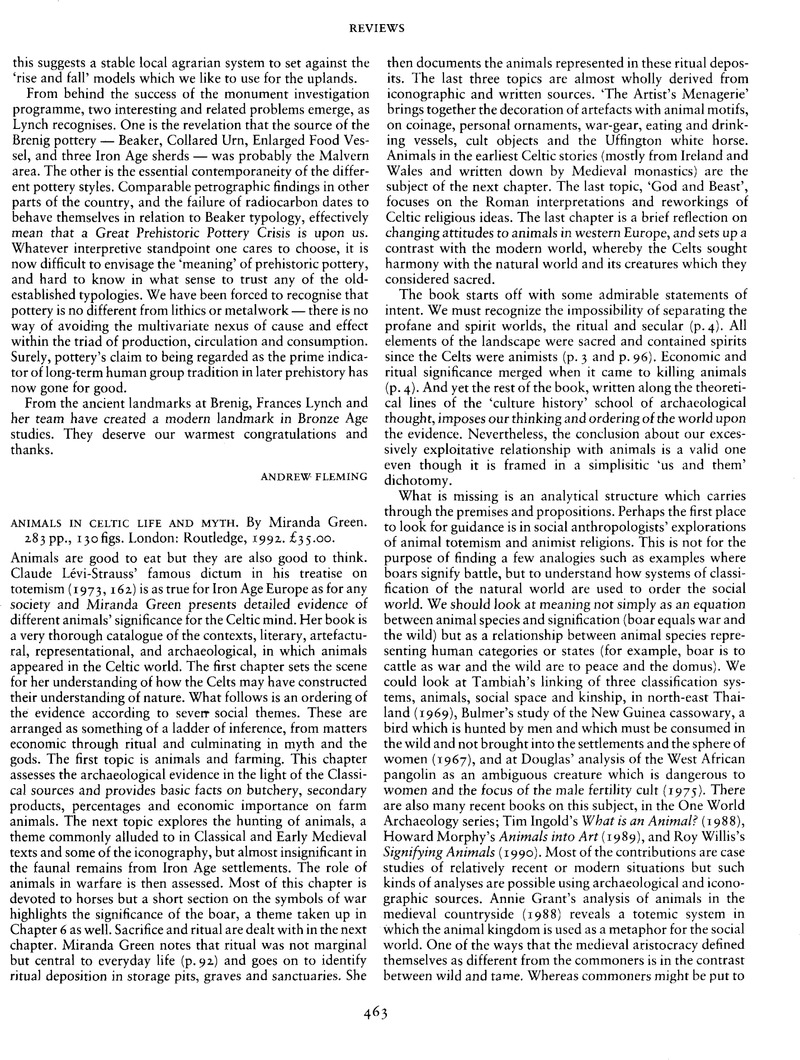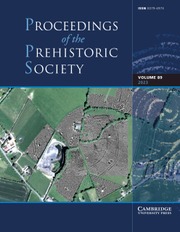No CrossRef data available.
Article contents
Animals in Celtic Life and Myth. By Miranda Green. 283 pp., 130 figs. London: Routledge, 1992. £35.00.
Review products
Animals in Celtic Life and Myth. By Miranda Green. 283 pp., 130 figs. London: Routledge, 1992. £35.00.
Published online by Cambridge University Press: 18 February 2014
Abstract
An abstract is not available for this content so a preview has been provided. Please use the Get access link above for information on how to access this content.

- Type
- Book Review
- Information
- Copyright
- Copyright © The Prehistoric Society 1994
References
Bulmer, R.
1967. Why is the cassowary not a bird? A problem of zoological taxonomy among the Karam of the New Guinea Highlands. Man
2, 5–25.CrossRefGoogle Scholar
Douglas, M.
1975. Implicit meanings: essays in anthropology. London: Routledge and Kegan Paul.Google Scholar
Grant, A.
1988. Animal resources. In Astill, G. and Grant, A. (eds), The countryside of medieval England, 149–187. Oxford: Blackwell.Google Scholar
Hill, J. D.
1993. Ritual and rubbish in the Iron Age of Wessex: a study on the formation of a specific archaeological record. Ph.D. thesis, University of Cambridge.Google Scholar
Hingley, R.
1990. Public and private space: domestic organization and gender relations among Iron Age and Romano-British households. In Samson, R. (ed.), The social archaeology of houses, 125–147. Edinburgh: Edinburgh University Press.Google Scholar
Oswald, A.
1991. A doorway into the past: roundhouse entrance orientation and its significance in Iron Age Britain. B.A. dissertation, University of Cambridge.Google Scholar
Parker Pearson, M. in Press. Food, fertility and front doors in the first millennium BC. In Collis, J. R. and Champion, T. C. (eds), The Iron Age in Britain and Ireland: recent trends. Sheffield: JR Collis Publications.Google Scholar
Piccini, A.
1992. Behind the green door: rath and cashel entrance orientation and its significance in early historic Ireland. M.A. Dissertation, University of Sheffield.Google Scholar
Tambiah, S. J.
1969. Animals are good to think and good to prohibit. Ethnology
8, 424–459.CrossRefGoogle Scholar
Willis, R. (ed.) 1990. Signifying animals: human meaning in the natural world. London: Unwin Hyman.Google Scholar


